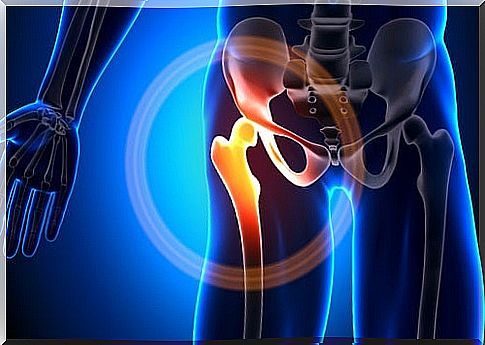Parathyroid Hormone Controls Calcium Levels And Bone Formation
PTH is parathyroid hormone, which, as its name suggests, is produced in the parathyroid gland and released into the blood from there. The parathyroid glands are located in the neck, near the thyroid gland. Parathyroid hormone controls the levels of calcium, phosphorus, and vitamin D in the blood. Consequently, the function of the hormone PTH is important in regulating bone growth.
Your doctor may order a test for this hormone if you have:
- A high level of calcium or a low level of phosphorus in the blood.
- Severe osteoporosis that cannot be explained or does not respond to treatment.
- Renal disease.
Also read 6 signs to identify if you have thyroid problems
Role of calcium and phosphorus in the human body
Calcium is an essential mineral for the functioning of the body. Together with phosphorous compounds, it is essential for the formation of the skeleton and for the essential functions of cells.
This mineral is responsible for regulating nerve transmission and the contraction of muscle fibers. Without enough calcium, muscle contraction and relaxation would not be adequate. It also participates in the blood clotting process. In addition, calcium is responsible for receiving signals and transmitting them in the cell so that certain physiological functions are carried out.
As for phosphates, they are a fundamental part of bones and teeth, this being their main function. Besides, they also participate in the manufacture of substances such as DNA and proteins, among others.
How the calcium concentration is regulated
To control the balance of calcium in the blood and maintain bone structure, the body has different mechanisms. In these mechanisms, vitamin D, calcitonin and parathyroid hormone or PTH stand out. All of them are released according to the calcium levels in the blood. Thus, when calcium levels are low, vitamin D and PTH increase their levels and calcitonin decreases.
Osseous remodeling

Bone remodeling is the result of two activities that occur on the bone surface:
- The production or formation of new bone, by bone cells called osteoblasts.
- The loss or resorption of old bone by bone cells called osteoclasts.
These two activities must be in balance, otherwise bone problems can occur.
Cytokines, calcium, phosphorus and the action of three hormones are involved in this process : PTH, vitamin D and calcitonin. In addition, secondary hormones such as thyroxine, estrogens and androgens, and growth hormone are involved.
Functions of PTH or parathyroid hormone

As we have said, by decreasing the concentration of calcium in the blood , the hormone PTH is released into the blood. There is a compound on the market called teriparatide that is synthetic PTH, whose functions are the same as the hormone itself. That is, to act against the reduction of calcium or hypocalcemia.
To help the body when there is hypocalcemia, PTH releases calcium from the bone, retains it in the kidney, and increases the absorption of calcium from the intestine into the blood. It also reduces the levels of phosphates in the blood.
Therefore, the PTH presents the following actions:
- Increases blood levels of calcium and magnesium.
- Reduces blood levels of phosphorus.
- Increases the number and activity of osteoclasts.
- Increases renal potassium secretion.
Paradox of the therapeutic utility of PTH and osteoporosis
In addition to releasing calcium into the blood and preventing hypocalcemia, this hormone is used therapeutically to treat osteoporosis.
However, this hormone would increase the number and activity of osteoclasts, which are the cells responsible for bone resorption. In theory, this situation would facilitate the appearance of osteoporosis, since it destroys the bone instead of strengthening it.
The explanation for the use of PTH in the therapy of osteoporosis lies in the powerful “constructive” action of the hormone, which is why this situation becomes paradoxical.
Continuous and intermittent treatment with parathyroid hormone should be carried out in the treatment of osteoporosis. In this way, bone mass is increased and the action of bone formation exceeds that of degradation.








